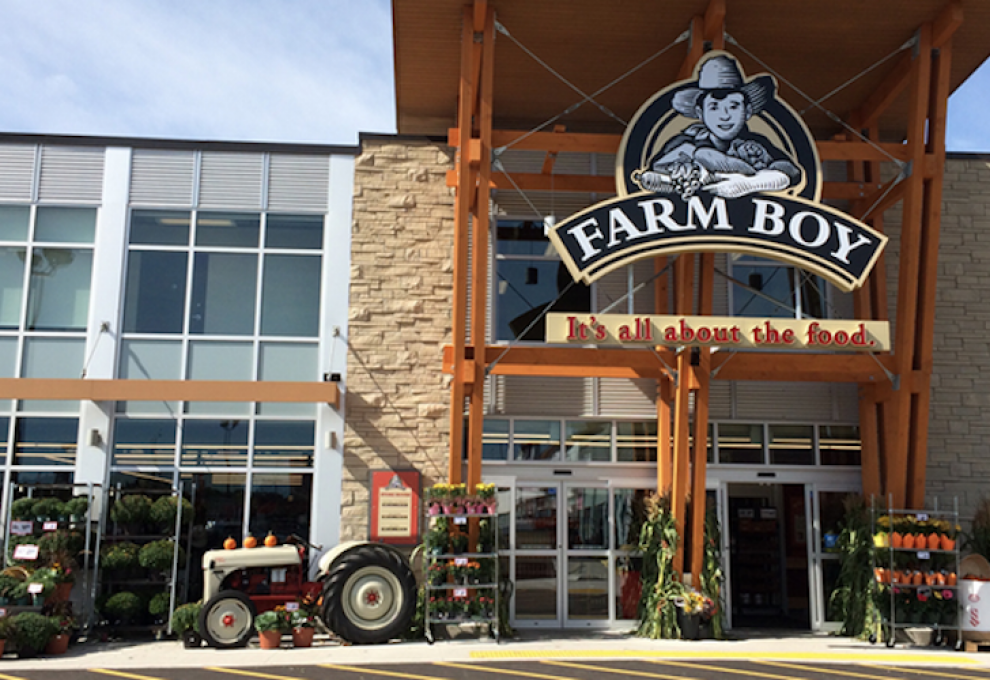
As we continue to move from market to market in Canada, this month we will explore the largest market by population: Ontario. This is the area with the largest weekly food potential and all of the national retailers are fighting for share in this lucrative marketplace. Volume is key to success in the food industry and although competition is tough, Ontario remains the best opportunity to generate sales per square foot.
Ontario is home to more than 38 per cent of Canadians with just over 13.242 million people as reported by Statistics Canada in the 2016 census. We see estimates of the total food industry in Canada being $120 billion per year, which means based on the Ontario population, there are approximately $882 milion worth of food purchased in Ontario stores each week. If produce is a 10 per cent penetration in these food sales, there is more than $88 million up for grabs in the produce department each week.
One of the characteristics of the Ontario market is ethnic diversity. In the urban area of Toronto there has been an incredible change in the population in recent years. Of the more than 13 million living in Ontario, more than 3.852 million or 29 per cent have immigrated to Canada. This diverse population has a significant impact on product demand and the products that can be offered for sale.
According to the 2016 census the breakdown of the ethnic origin of Ontario immigrants is as follows:
The diversity of the population presents challenges and opportunities for producers. The product mix is changing fast and it can be difficult to produce enough to meet the demand in some commodities where as others can be over produced as demand shifts. We see new crops being produced however this takes time to find the right seed and maximize production.
Customers influence the buying decision
All of the national food retailers have a presence in Ontario. One of the biggest challenges in a market that is growing is the availability and cost of real estate to build stores. It can be difficult to match a capital expenditure program to the population growth and geography. Retailers continue to strive to put the right stores in the right markets.
Loblaw roots are in Ontario where the company was started and has expanded through organic growth and acquisitions such as Fortino’s and Zehrs. The company is the leading retailer in Ontario market share. The company is divided into three retail divisions: discount, market and Shoppers Drug Mart. In Ontario, the discount division operates Real Canadian Superstores and No Frills. The market division operates Loblaw, Zehrs, Independent and Fortino’s with the company also operating T&T stores but more autonomously than the other banners. We continue to see more and more food in Shoppers Drug Mart stores in the drug division. Produce is supplied out of the Maple Grove warehouse that services all stores in all divisions.
Sobeys have been restructuring their business nationally and Ontario is part of their new national structure. Sobeys, Foodland and FreshCo stores dominate the store banners and there are still six Safeway stores and three Price Chopper stores left in Ontario. Recently, Sobeys purchased the 26 Farm Boy locations in the province. To date they have said the stores will maintain their autonomy and operate as they have been. The company operates FreshCo separately to ensure it functions as a discount banner. Produce is distributed to Ontario stores from the distribution center in Whitby.
Metro purchased the A&P stores in Ontario to provide entry into the food industry in Canada’s most populous province. The company operates Metro and Food Basics discount stores, two Adonis stores and recently Jean Coutu in the province. Many stores were renovated after the A&P acquisition to bring a more consistent store offering.
Walmart has continued to expand the number of Supercenters in the province. Walmart operates the Ontario stores from its national office in Mississauga, however as in many Walmart markets, stores do have some autonomy to ensure they meet the needs of consumers in the market. Recently the company opened a new produce distribution center in Cornwall to service the market.
Costco has 35 warehouses in Ontario. The Ontario Costco stores are managed out of the Ottawa Costco office. These warehouses offer similar assortments to warehouses in other regions. Obviously the concentration is in Metro Toronto however they cover the province from one end to the other including Windsor and Sudbury.
Whole Foods have a presence in Ontario with six stores in the Greater Toronto Area and one in Ottawa. They have continued to increase their footprint from the first store in Yorkville to reach west to Mississauga and east to Markham. Most Whole Foods stores will display where their produce comes from so you can figure out who the suppliers are. They prefer organic first but have to make concessions in some categories, depending on availability.
Many other smaller retailers, serviced by different wholesalers, also service Ontario. Independent stores such as Nations, Pusateri’s, Bruno’s and Highland Farms are a great destination to check out the assortment and produce merchandising. The diversity of the market, population density and accessibility to fresh produce make this the best market to find smaller retailers servicing specific market segments.
Your competition
Producers in Ontario have a dominant position in the market. The Foodland Ontario program highlights Ontario product and does a very good job keeping other products out. The size of the market will support production across any category where there is demand so there are fewer reasons to bring products in. The major food retailers have distribution facilities in Ontario so that ensures local producers have access to the stores serviced by these networks.
The Ontario Food Terminal in South Etobicoke is a big asset to the industry in this market. Growers have access to all chains and independents through the terminal. Certainly the major chains build direct supply programs with growers, but the terminal is a second option for them and a first choice for independents. On the Ontario Food Terminal website they claim there are more than 5,000 registered buyers.
The Ontario market
Ontario is the biggest market and retailers would tell you the most competitive. Consumers have access to the broadest range of selection and pricing because there are more market niches and the growing conditions are generally favorable, not to mention the huge greenhouse industry in Leamington.
If you have any questions about selling your products or developing strategies for specific customers please give me a call at (902) 489-2900 or send me an email at peter@skufood.com.
WHAT’S IN STORE?
Buy local is national
Given the recent challenges to negotiate a trade agreement with our U.S. neighbours and other issues there is a renewed emphasis on support for Canadian products. The Dairy Farmers of Canada have been very vocal about the support for Canadian milk and this theme page for Canadian made products would probably not have been planned a few months ago.
It will be interesting to see how long consumers will have this issue on their radar and if it impacts buying decisions or just survey results.

Add new comment